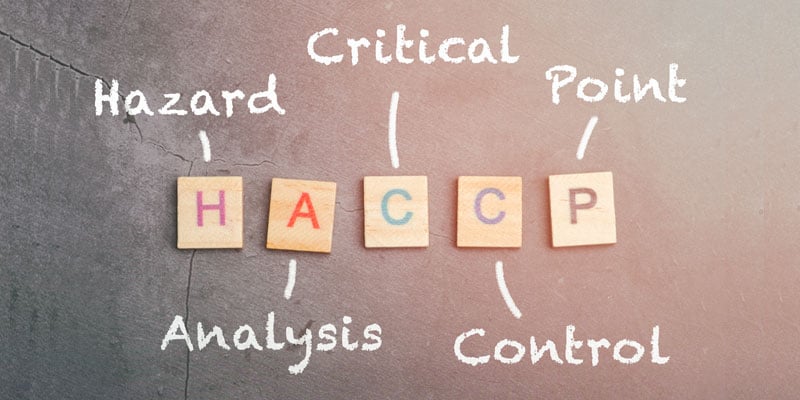Originally developed by NASA in the 1960s, it’s h
as been since adopted as one of the de facto standards in global food trade for ensuring food safety and quality. It is also codified in one form or another in EU, US and several other nations’ regulation as the foundation for ensuring food safety.
Today, even other well-known standards such as ISO 22000 and Safe Quality Food Institute’s SQF Code rely heavily on HACCP principles.
With such a host of organizations behind it, HACCP can sound like it would be burdensome to adopt and manage. However, in a modern system, the entire process is digital - we talk about digital HACCP.
But to start with, let’s get to know the 7 principles of HACCP and what they mean.
7 Principles of HACCP
The HACCP guidelines are built around 7 principles that allow businesses to identify and control hazards that could endanger their food safety.
The 7 principles of HACCP are:
1. Conduct a Hazard Analysis
This means going through the process in which food is handled and identifying possible hazards to food safety and their likelihood.
2. Identify Critical Control Points
Having identified specific hazards, you need to set up control points where that hazard can be prevented or its risks minimized.
3. Establish Critical Limits
Making sure hazards are controlled in critical control points requires you to set up limits within which your food is safe.
4. Monitor Critical Control Points
Once limits have been set, you need to establish a monitoring program for checking that they are not breached.
5. Establish Corrective Actions
If a breach were to happen, however, you need to have thought about how to correct the situation and established relevant corrective actions to do so.
6. Establish Verification Procedures
You also need to periodically verify that all these steps are suitable for their purpose, that monitoring is being performed and that corrective actions have the intended effect.
7. Establish Record Keeping Procedures
Finally, keeping records of monitoring and corrective actions helps you analyze how well you are doing at preventing hazards. It is also often needed to prove compliance
HACCP Monitoring
Monitoring the critical control points is of course the part of HACCP that is most readily evident in your businesses’ day-to-day operation.
It’s the one thing that your staff will be doing to more or less every day: monitoring temperatures, checking sell-by-dates, cleaning utensils and workstations, and other such duties the HACCP plan requires.
And while these tasks are extremely important in order to maintain your food safety and quality, reporting them for monitoring and verification purposes can get cumbersome.
We believe that HACCP monitoring should be as easy and natural as possible.
This would ensure that all monitoring activities get done on time and in the correct way.
And it would also help with verification, as all recorded data on parameters, activities and possible corrections make it much easier to analyse the effectiveness of the HACCP plan.
For these kinds of things, digital HACCP is the most effective solution.
HACCP education and training
To be able to maintain your HACCP program effectively, employees need to be trained in how to do it. In HACCP, employee training is a key element for successful implementation.
And it’s not just that your staff needs to know what kind of monitoring to do or what actions to take. Each employee needs to also understand the importance of their role in providing safe food.
That means they should have basic training and understanding at least on:
- What is HACCP?
- What are my personal HACCP working instructions?
Basic HACCP training is of course readily available online through various courses, webinars and guides. But providing personal working instructions is a bit trickier.
Your HACCP plan should include the general guidelines of employees’ daily tasks, but personalizing HACCP checklists on an individual employee level can be difficult to achieve.
Digital HACCP can help with this, too, by providing clear work instructions that are tied to HACCP checklist which are delivered individually to employees. This helps them perform their HACCP-related tasks correctly every time.
Guidelines for applying HACCP and the 7 principles
What we have discussed here is naturally only a very brief overview of what HACCP is, what the 7 principles of HACCP require of an HACCP plan, and how digitalization could help with implementing an HACCP system.
We have also prepared a guide to help you better understand what you would need to do to create your own HACCP-based food safety program.
In it we give you more information on:
- How to start creating an HACCP plan?
- What are hazards in HACCP?
- How to identify hazards and critical control points?
- What are the benefits of implementing HACCP?
- What does digital HACCP add to the mix?
Getting Started Guide

